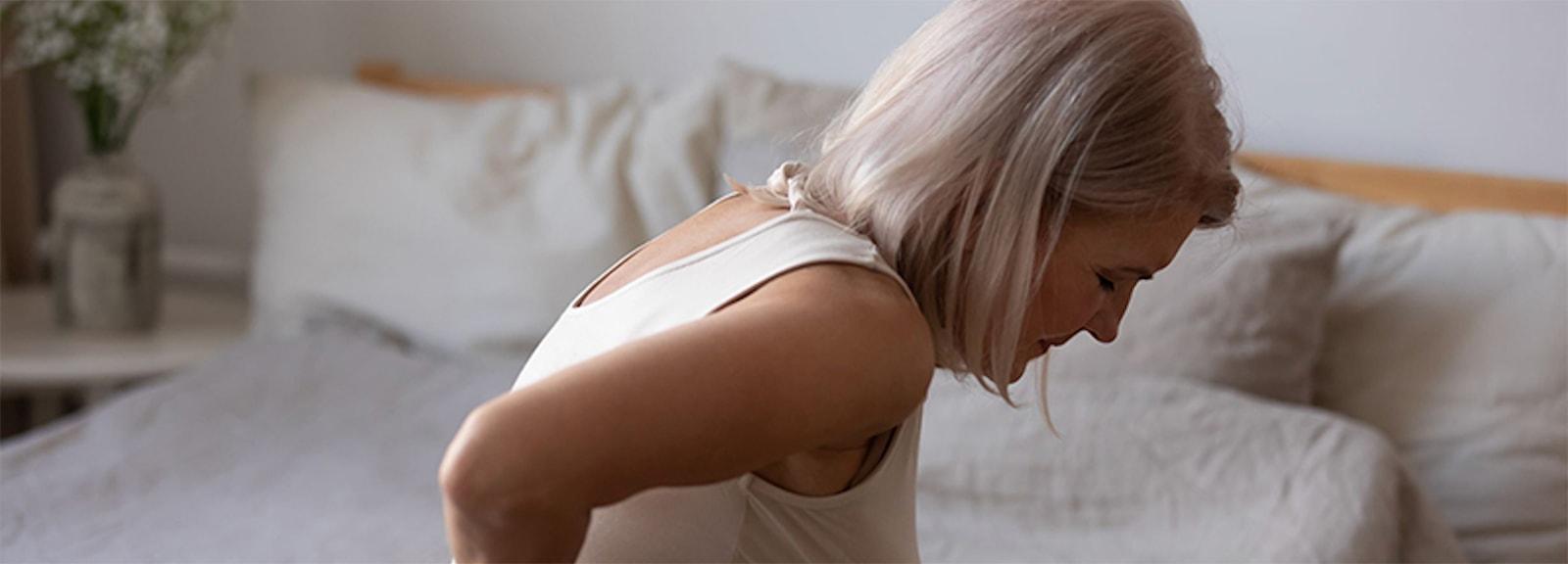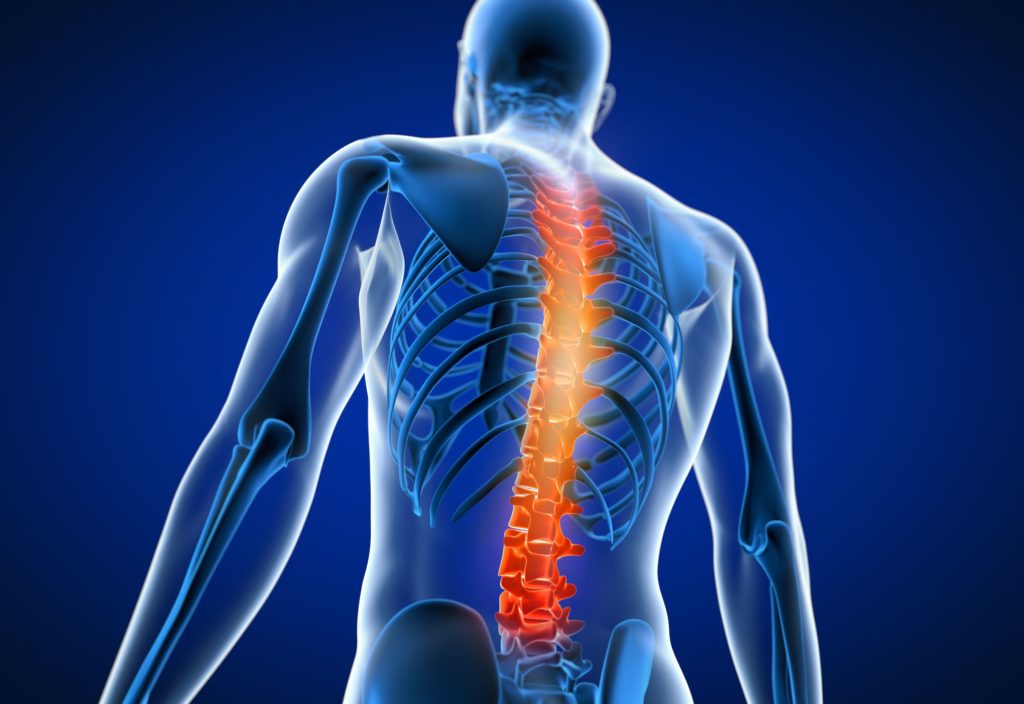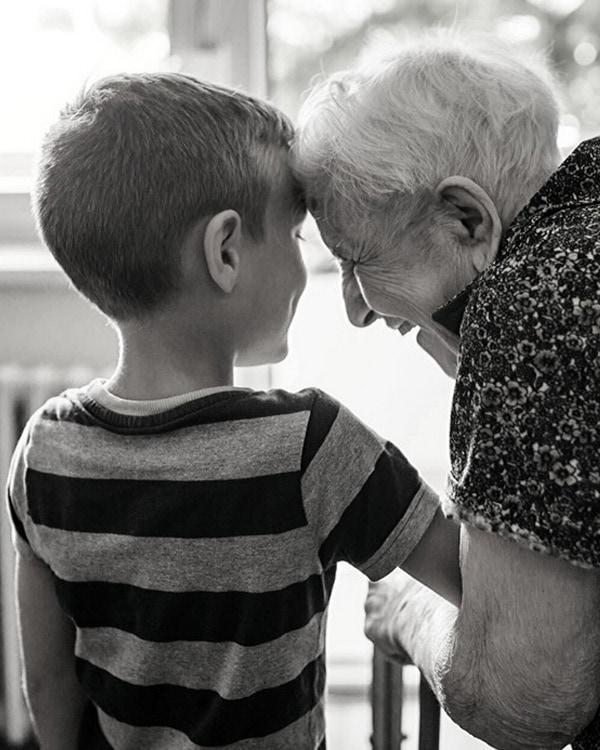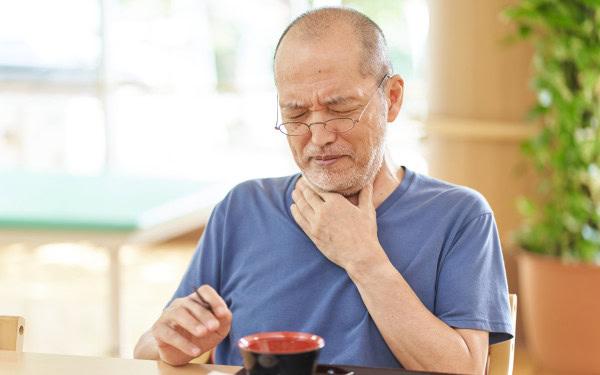
Osteoporosis and Pain – Helping Your Body Help Itself

Osteoporosis and Pain – Helping Your Body Help Itself
Osteoporosis does not cause pain. It is a broken bone (fracture) caused by the disease that may cause pain. In fact, osteoporosis has been called “the silent thief” because you can be losing bone gradually and not know it. A wrist fracture, especially among younger, active women, is often the first sign of osteoporosis. Shoulder, hip and spine are other common sites of fracture from osteoporosis.
Broken bones can be very painful. However, some people feel almost no symptoms from spinal compression fractures. The cracks (microfractures) in the bone happen so gradually over time that the pain is relatively mild or unnoticeable. In fact, two thirds of spine fractures do not cause pain and are often diagnosed through an x-ray for another reason. Or they may be misdiagnosed as something else, a pulled muscle for example.
But spine fractures can cause pain – sudden, severe back pain or pain when twisting or bending. Spine fractures can occur from the simplest of events – a fall from standing height, making a bed, lifting a heavy object, even a cough or sneeze.
There are three stages of pain that may occur after a fracture; however, not everyone who fractures will experience all these stages of pain.
- Acute pain starts suddenly and alerts us to the injury- the broken
- Sub-acute pain usually occurs the first few weeks after the fracture while the bone and surrounding soft tissue heal. For example, a broken leg will hurt right after the injury and during recovery, but as time goes on, it gets better.
- Chronic pain is pain that continues long after the bone and soft tissue have healed. Generally, it’s diagnosed after three to six months of pain.
The following information will focus on how to manage acute and sub-acute pain.
A fractured vertebra can take anywhere from 6 to 8 weeks for the bone to set and up to 12 weeks to heal completely. But recovery from a vertebral facture goes beyond healing the bone. Recovery becomes an ongoing process to regain strength and mobility and to resume your daily activities. Everyone experiences a slightly different recuperation. You may find your posture changing and feel some nagging pain. This is because a spine fracture results in a change in the shape of the vertebra itself, which can affect muscles, tendons, ligaments and nerves near the fractured bone. When a vertebra is damaged, the spine makes adjustments to keep the body in balance, which may cause muscle pain. The pain can subside over time as the body adjusts to its new shape.
Untreated pain can put you at risk for depression, anxiety, insomnia and unnecessary suffering. Treating your pain early can help you move and breathe more easily, eat and sleep better and improve your recovery. If your pain is such that you cannot sleep, you are eating very little and you find yourself sinking into depression, it’s important to contact your doctor to get help for recovery.
Understanding the pain you are experiencing can be the first step to relief. Get to know your body in terms of how it is dealing with the injury. Then you can choose the best approaches to manage your individual pain. Advocate for an overall treatment plan from your healthcare professional that includes medication, physical treatment and self-management tools.
Christine Thomas has lived with five vertebral fractures as a result of osteoporosis. Her journey has included learning how to manage her pain, instead of letting the pain manage her life.
“Pain can consume you. It can change your entire world. It can be relentless. Until I was diagnosed with five fractures in my spine, I had no symptoms of osteoporosis, even though it develops over time (years, even). What jolted me to its impact was the excruciating, debilitating constant pain just weeks after the birth of my daughter. Sharing my experience has brought back many horrible memories of living with searing pain and the struggle to get help to manage it.
Pain is hard to measure as it is a subjective experience. One person can never truly feel or understand another person’s pain. Many people with spinal fractures or other broken bones caused by osteoporosis are unaware of options available to them to manage pain and improve their quality of life.”
What Can I Do to Help Relieve My Pain?

First try to put all your assumptions aside. Instead of focusing on a single solution, examine a combination of different approaches and treatments that complement each other. Something you have tried before that did not work may help when combined with different therapies. Both drug and non-drug treatments can be successful in helping to manage pain. Try exploring these options and see what works best for you.
Medication
Most pain medication is designed to manage acute pain. People recover more quickly when pain is better managed, so the goal is to take the medication that works best to reduce your pain, thereby allowing you to sleep better at night and be more mobile during the day. Most likely, your doctor will recommend an over-the-counter medication. If that sufficiently relieves your pain, you won’t have to try anything stronger. If it doesn’t, talk to your doctor, especially if you are in excruciating pain, and he or she may prescribe something stronger for you. As with any medication, talk to your doctor before trying anything. There may be side effects or interactions that you are unaware of, and you want to be safe as you try to deal with your pain.
Physical Treatments
Knowing what you should and should not do after your fracture is key to recovery.
- People in pain do not feel like moving. But sitting still is not good for the bones or the pain. It is important to find ways to move that are appropriate for your condition. Advice from a physiotherapist is important for safe movement. “Do’s” to help manage pain and “Don’ts” that can cause more harm/pain can be a lifeline! A physiotherapist can help re-evaluate your sleep posture and teach you techniques to help minimize pain. “Do’s” may include the log roll technique to get out of bed or putting a pillow between the knees at night to take pressure off the spine; “don’ts” may include bending forward or no lifting. An occupational therapist can suggest tools to help you better navigate your home during recovery, for example, a reacher to pick up items, raised toilet seat, grab bars and railings.
During the recovery process, many types of movement may be painful even when you use correct techniques. An important part of your recovery is to learn to move safely in a way that does not put any additional strain on the spine.
- Heat and cold. Warm showers and hot packs to ease stiff muscles and cold packs to numb aching areas and reduce swelling can be helpful.
- Braces and supports. These should be used under the guidance of your healthcare professional for the short term only, as long-term use can lead to weak muscles. At some point it is important to start exercises to strengthen back muscles. A consultation with a physiotherapist can help.
Self-Management Tools – Mind and Body Therapy
Many studies show that the most effective way to conquer pain combines medication and self-care. The following are simple and effective tools that can complement what your doctor recommends:
- Mindfulness
- Guided imagery
- Meditation
- Breathing and relaxation techniques
- Reaching out to others who have managed pain after a fracture caused by osteoporosis
- Sometimes it helps just to take your mind off the pain with music that you love or a good book or movie.
There are several options to choose from to help manage your pain and regain your quality of life. The key is to listen to your body, take an active role in your recovery and choose tools and explore your options with your healthcare team.





